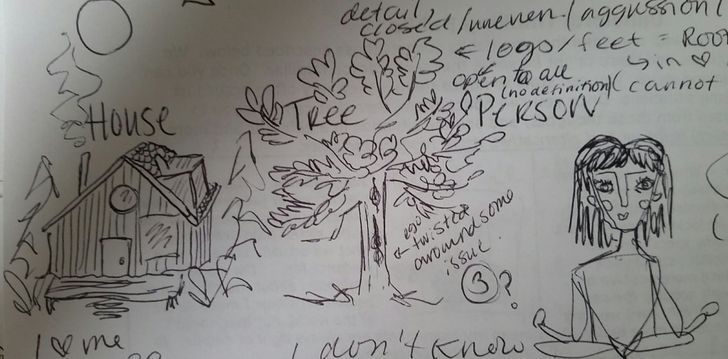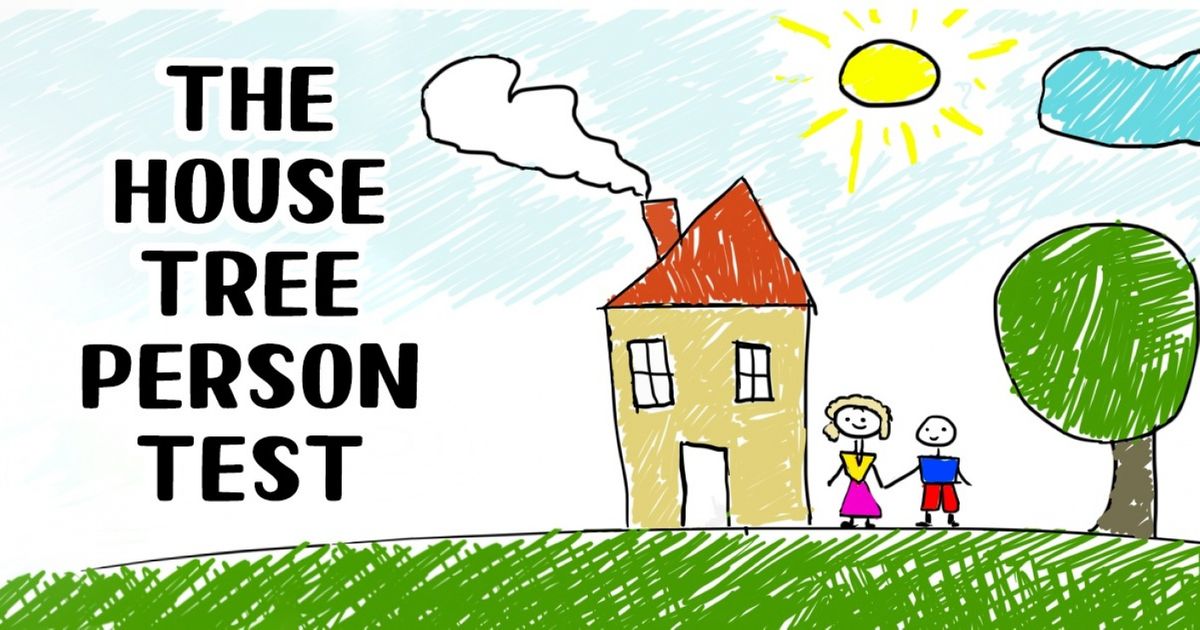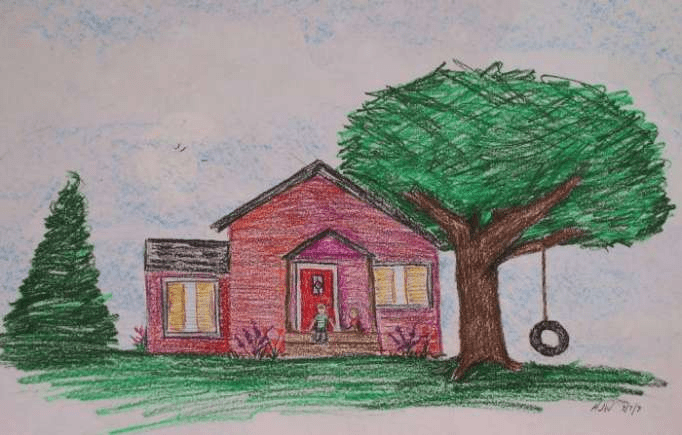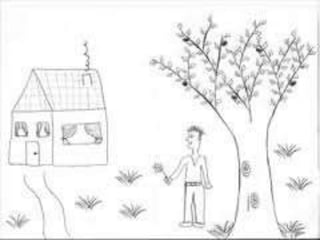Personal Tree Drawing Interpretation Analysis by Cheryl. This Beyond Art Therapy activity is similar to HouseTreePerson in art therapy but goes to a deeper level of self awareness due to adding the sun water and animal.

The H T P Test Semantic Scholar
The only instructions are DRAW A TREE Say no more.

. Not so festive tree Drawing interpreted. This is similar to the leaves on the tree as it is how we get fed foods needs etc. The medium of expression is the freehand pencil drawings of a house tree and person Buck 1966.
Drawings interpreted from one familys children. It may predict a childs intelligence later in life. Youngest age 2s Tree drawings.
Make a freehand drawing of a house a tree and a person. At the end of the time limit take up all of the class drawings in random order. Analysis of the H-T-P is a two-phased four-step process.
Small feet can possibly mean insecurity in a person. Teeth can mean aggression if they are drawn. To take the test participants are asked to draw a house H a tree T and a person P on a blank piece of paper.
The aim of this study was to clarify the pathological meaning of no synthetic. Title Analysis of the synthetic house-tree-person drawing test for developmental disorder abstract Background Some patients cannot draw three subjects on the same page during the synthetic house-tree-person drawing test S-HTP. Draw a house a tree and a person.
Middle Child age 7s Tree drawings. In phase one the first step in testing is nonverbal and almost entirely unstructured. The aim of this study was to clarify the pathological meaning of no synthetic sign and investigate its use for the early detection of developmental disorders at a pediatric.
The second step is verbal apperceptive and more formally structured. 1 copy of House-Tree-Person Drawings. In contrast to the branches the roof reflects the degree to which a person is settled and secure.
View the following tree drawings and their interpretation. If a tree house is drawn in the branches the person might be expressing a need to escape from a threatening environment. The idea is that with the very minimal instruction to draw a picture that includes a person a house and a tree the.
It is widely used in general psychological problems and mental illness such as psychological crisis intervention. An Illustrated Diagnostic Handbook. They often say the eyes are the mirror to the soul.
Height up the tree represents the age of the trauma so halfway up for a 10 year old is at age 5. The Draw-A-Person Catalogue for Interpretative Analysis. The roots refer to the persons hold on reality but also reflect a relationship to the past issues.
1 x The Draw-A-Person Catalogue for Interpretative Analysis 7400- ADD TO CART. The House-Tree-Person Test HTP is a projective technique designed to determine the main personality traits of a person who performs it. Next distribute the tree drawings to the students making sure that no student receives their own tree drawing.
Apr 17 2016 - Tomorrow Im planning on doing a set of drawings with my class that are referred to as the Person House Tree drawings. Some patients cannot draw three subjects on the same page during the synthetic housetreeperson drawing test SHTP. Research does show that weeping willow trees are more common in depressed people.
The second step is verbal apperceptive and more. Squirrels and small animals are an Id intrusion into an area free from ego control. The synthetic house-tree-person S-HTP drawing test is a projective measure primarily designed to assess specific complex personality traits.
The analyzer can predict certain personality traits of the individual based on his or her drawings of these simple everyday objects. This is a fantastic way to use my Beyond Art Therapy. 1 copy of Catalog for the Qualitative Interpretation of the House.
The legs are similar to the tree roots and represent how grounded a person may be. That childs drawing of a house tree or person may represent more than an element of the refrigerator-as-art-gallery. In phase one the first step in testing is nonverbal and almost entirely unstructured.
The subjective nature of this aspect of the HTP as with other qualitative tests has little empirical evidence to support its reliability or validity. People with high needs for nurturance draw apples. Look at how the mouth is drawn.
Manual and Interpretive Guide. We call this phenomenon no synthetic sign. The medium of expression is the freehand pencil drawings of a house tree and person Buck 1966.
Students are given 8-10 minutes to draw a tree on a blank sheet of paper. The test attempts to identify your most common and hidden inner conflicts. Now get ready to discover what your drawing can tell about your personality.
Oldest age 10s Tree drawings. We call this phenomenon no synthetic sign. Its often used during job interviews and different kinds of evaluations.
Materials for Beyond Art Therapy House Tree Sun Water Animal Drawing. Interpretation of results projective test the results of the HTP are subjective The subjective analysis of the test takers responses and drawings aims to make inferences of personality traits and past experiences. Up to 10 cash back Analysis of the H-T-P is a two-phased four-step process.
Add to Favorites. This is an investigation of the clinical validity and use of the House-Tree-Person HTP projective drawing a widely used diagnostic tool in the assessment of child sexual abuse. A Creative Approach to House Tree Person in Art Therapy.
HTP drawings were collected archivally from a sample of sexually abused children n 47 and a nonabused comparison sample n 82.

This House Tree Person Test Will Determine Your Personality Bright Side

This House Tree Person Test Will Determine Your Personality Bright Side

The House Person Tree Personality Test Practical Psychology

The House Tree Person Personality Test Examples Included Youtube

House Tree Person Htp A Personality Test Exploring Your Mind

Translation Of The Beyond Art Therapy House Tree Person Therapy


0 comments
Post a Comment